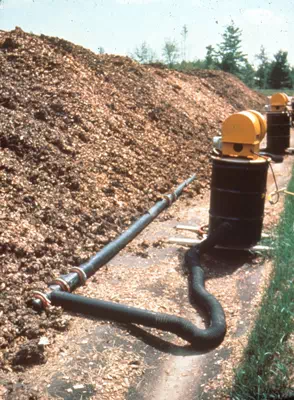|
Carcass Disposal Information
This section of VetCA provides links to various resources pertaining to animal carcass disposal.
|
Appropriate Animal Carcass Disposal
The AVMA advocates safe and environmentally responsible disposal of animal carcasses, whether on an individual animal basis or during mass mortality events. As such, the AVMA supports increased research and education towards the development of appropriate methods and guidelines for animal carcass disposal. (Also see AVMA’s policy on Animal Carcass Risk in Natural Disasters.) |
Domestic Animals - Companion and Production Animals
A variety of authorized disposal means exists for carcasses of domestic animals, regardless if they are considered companion or production animals. Advances on many fronts have expanded carcass disposal techniques; however, the applicability, costs, and risk mitigations of each are important considerations when choosing from the authorized and available disposal means in your area. Additionally, increased restrictions upon carcass disposal, such as those pertaining to specified risk materials (SRMS) in cattle 30 months of age and older, have greatly impacted sectors of animal owners, resulting in even greater need for improved availability of practical carcass disposal options.
While cremation or burial are the most common means of final disposition for small companion animals, these options may not be practical or possible for all animal carcasses.
- Some municipalities prohibit burial of animals within their boundaries.
- Weather, environmental, or soil conditions may not be conducive to burial even if it is authorized in the desired location.
- Prevention of secondary toxicoses of scavengers and pollution of ground water are extremely important considerations when debating burial carcasses of animals which were pharmaceutically euthanized.
- Cremation costs are generally based on the weight of the carcass(es), and is often cost prohibitive with larger animals.
-
When done appropriately, composting provides an environmentally friendly means to dispose of carcasses and eliminate a variety of pathogens.
The following useful web sites and university sources of information on carcass disposal are provided here to assist veterinarians and their staff in providing accurate and useful guidance to their clients (as well as for use in their own practices) regarding carcass disposal.
US EPA
- Agriculture and Carcass Disposal. Typical methods for the disposal of animal mortalities have included rendering, burial, incineration, and composting; each with its own challenges.
Cornell Waste Management Institute (CWMI).
- Farm Waste Management. A program in the Department of Crop and Soil Sciences in the College of Agriculture and Life Sciences at Cornell University. Topics of interest include composting and rendering of farm animals.
Michigan State University
Penn State University
South Texas State University
Virginia Tech
Wild Animals
State Regulations. Most states have enacted regulations governing the disposal of wild animal carcasses. These rules are in place to protect humans and animals from the spread of infectious and/or contagious disease. Typically, the agencies involved are the department of natural resources, fish and wildlife, and/or department of health. Check with your state agencies to determine the applicable regulations.
For proper disposal of wildlife carcasses, consult your state's Fish and Wildlife Service office.
Cornell Waste Management Institute (CWMI). A program in the Department of Crop and Soil Sciences in the College of Agriculture and Life Sciences at Cornell University. Topics of interest include composting roadkill.
Internet Center for Wildlife Damage Management. A discussion of alternative carcass disposal options.
Endangered Species. NCMS maintains a State Endangered Species Tool. It contains useful links to the U.S. Fish and Wildlife state contacts, state agency contacts and other useful information.
Bald Eagles or Golden Eagles. All carcasses, parts, and feathers of these eagles must be sent to the National Eagle Repository after you have satisfied the requirements of your state regulations.
Endangered Or Threatened Migratory Birds. Approval from your local Fish and Wildlife Office is required prior to disposing of or transferring any carcasses, parts, or feathers of endangered or threatened migratory birds.
|

